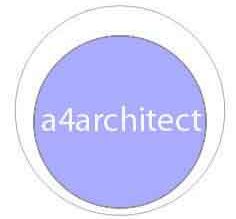Differences between High, Middle and Low cost houses in Kenya.
High cost houses have a construction cost of kes 40,000 per m2 and above.
Middle cost have between kes 25,000 to kes 40,000 and low cost have kes 25,000 and below.
High cost.
Example of this is projects such as Kihingo Village in Nairobi.
Notice the use of external textured surfaces, use of pattered hand dressed stones, external wall cladding with Mazeras, large full glass double doors, uPVC windows, stone coated steel roofing tiles and the large plinth area of approx.400m2.
These are a few of the elements that result to the high cost of construction.
Middle cost.
These are found in areas such as Kitenglea, Rongai, Ruai, Kiambu.
These are characterized by smaller plinth areas of around 100m2, use of natural stone external walling with basic keying finish, concrete or mabati steel roof, steel casement windows , small to average sized doors and windows without full glass and basic landscaping.
Low cost.
These are found in areas such as Kangundo, Joska,and 2km deep from tarmac in towns 30km and above from Nairobi.

The main characteristics include basic shape without elaborate design, external masonry walling without keying, no paint, use of light gauge steel roofing sheets, no ceilings, no landscaping, very small windows and doors.
Conclusion.
Its important to plan your building with the right class for the right neighbourhood. A high class finished house in a low class neighborhood will not give the returns. The cost of construction will be high but the maximum rental or sale value will be disproportionately low.
Same applies for low class finished building in a high class neighborhood.
A good example of this is the newly constructed Big Square building in Karen shopping centre. This has been constructed using high class materials. Its already enjoying 100% occupancy rates with rents of over kes 100 per sq.foot.


Also, the Karen Nakumatt building enjoys 100% tenancy rates with high rent per square foot.

In between these 2 buildings, is the Tana house building. The rent per square foot is much lower and the occupancy rate is also lower. This is because of the lower quality of materials and workmanship used, and lower architectural design appeal compared to the two buildings sandwiching it.
Tana House.

The cost of increase in quality of construction material and workmanship in an area that can derive good rent is usually very low . With good feasibility study planning where a business plan is prepared which will allow banks to understand the project and finance the construction is all what is required. When such a project is not carefully planned, the rental returns will be low for the duration of the building .
Francis Gichuhi Kamau, Architect.
0721410684


Leave a Reply